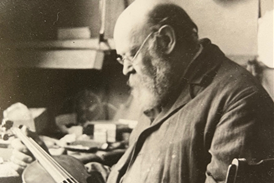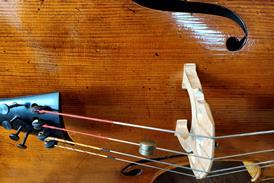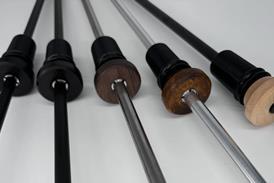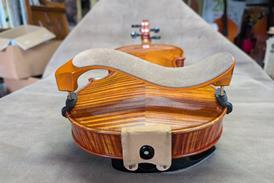- More from navigation items
- Home
- News
- For Subscribers
- Student Hub
- Playing Hub
- Podcast
- Lutherie
- Magazine
- Magazine archive
- Whether you're a player, maker, teacher or enthusiast, you'll find ideas and inspiration from leading artists, teachers and luthiers in our archive which features every issue published since January 2010 - available exclusively to subscribers. View the archive.
- Jobs
- Shop
- Directory
- Contact us
- Subscribe
- Competitions
- Reviews
- Debate
- Artists
- Accessories
Making Matters: Artistic licence and the ‘true violin’

Is our understanding of violin history too heavily influenced by the old Italians?
Discover more lutherie articles here
Read more premium content for subscribers here
The 17th-century painting The Paston Treasure faithfully depicts a number of objects from the Paston family’s collection. Despite, or precisely because of the typical ‘archaic’ features of the violin in the painting, its level of realism has been questioned on the website of the Yale Center for British Art: ‘The exaggerated corners and seemingly oversized f-holes of the instrument suggest that the painter may have exercised artistic licence in depicting these particular features’ (figure 1). This mistrust in the documentary value of artworks is widespread among makers and scholars, who still believe extant instruments are more reliable sources when it comes to studying the early history of violin making.
The second bias is rooted in the strong belief in Cremonese violin making principles as the sole basis for determining whether an instrument is a decent violin or whether it can even be called a ‘violin’ at all. In his article ‘Evolutionary Road’ (The Strad, February 2013) Roger Hargrave fails to abandon an old but persistent myth, when he states that ‘initially, Cremona and Brescia had monopolised the manufacture of the violin and its family’, and ‘by the second half of the 17th century this monopoly began to disappear’. In fact exactly the opposite happened. But in response to a letter on that article in the April 2013 issue, Hargrave makes the distinction between ‘true violins’ in the style of Brescia and Cremona, and instruments ‘in the style of a violin’, meaning everything else. So he actually denied the value, or even the existence, of violin making outside Cremona and Brescia before 1650. Problem solved in his opinion…
Already subscribed? Please sign in
Subscribe to continue reading…
We’re delighted that you are enjoying our website. For a limited period, you can try an online subscription to The Strad completely free of charge.
* Issues and supplements are available as both print and digital editions. Online subscribers will only receive access to the digital versions.




![[2] Dmytro Udovychenko pc Thomas Leonard](https://dnan0fzjxntrj.cloudfront.net/Pictures/274x183/7/6/9/37769_2dmytroudovychenkopcthomasleonard_137421.jpg)






















